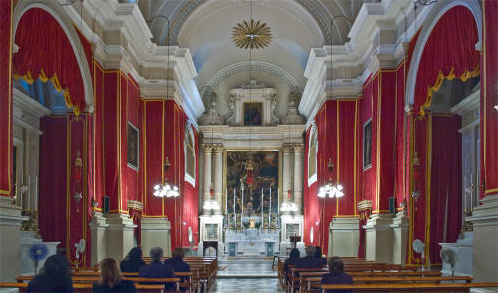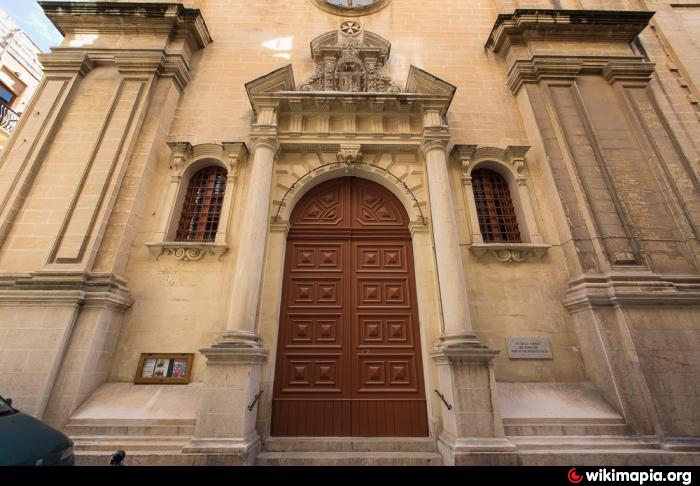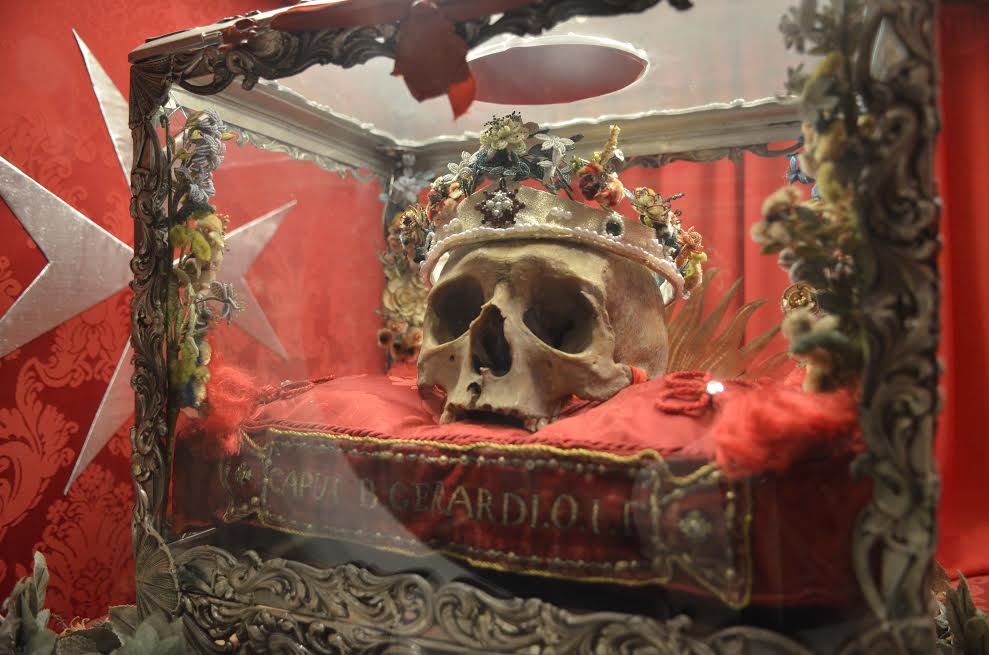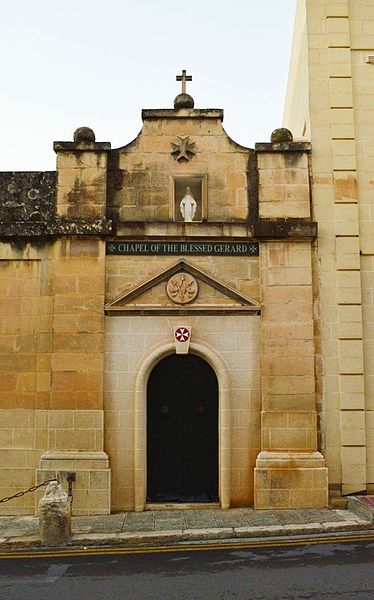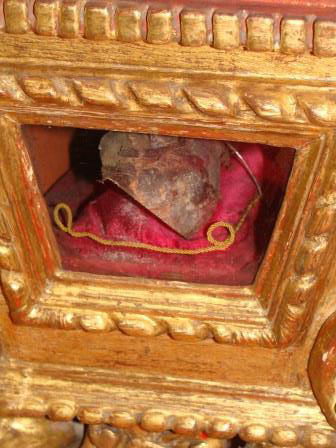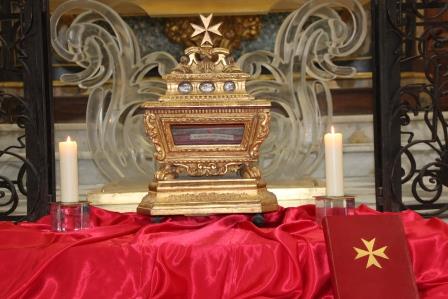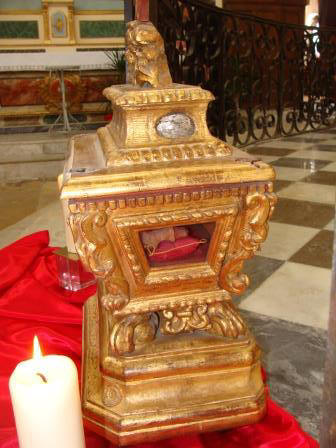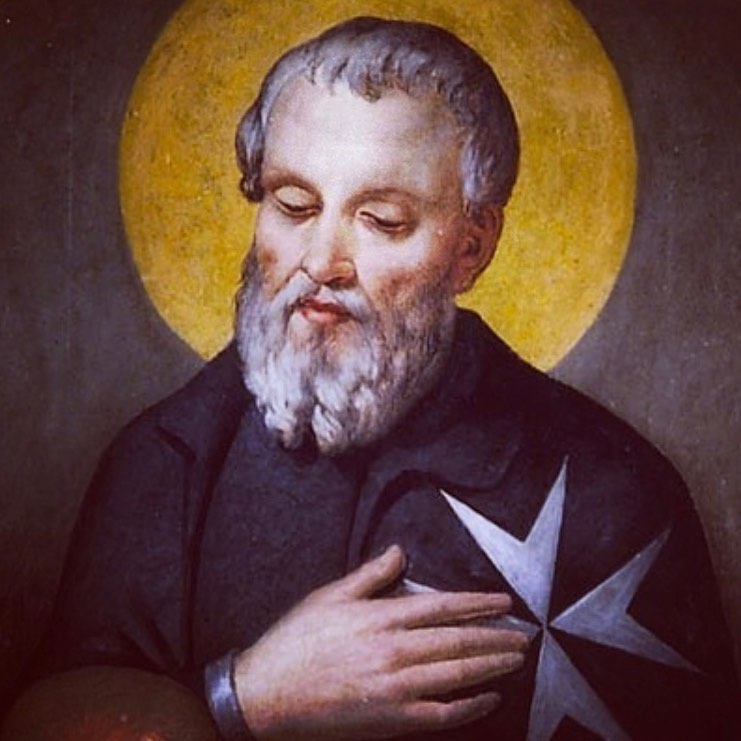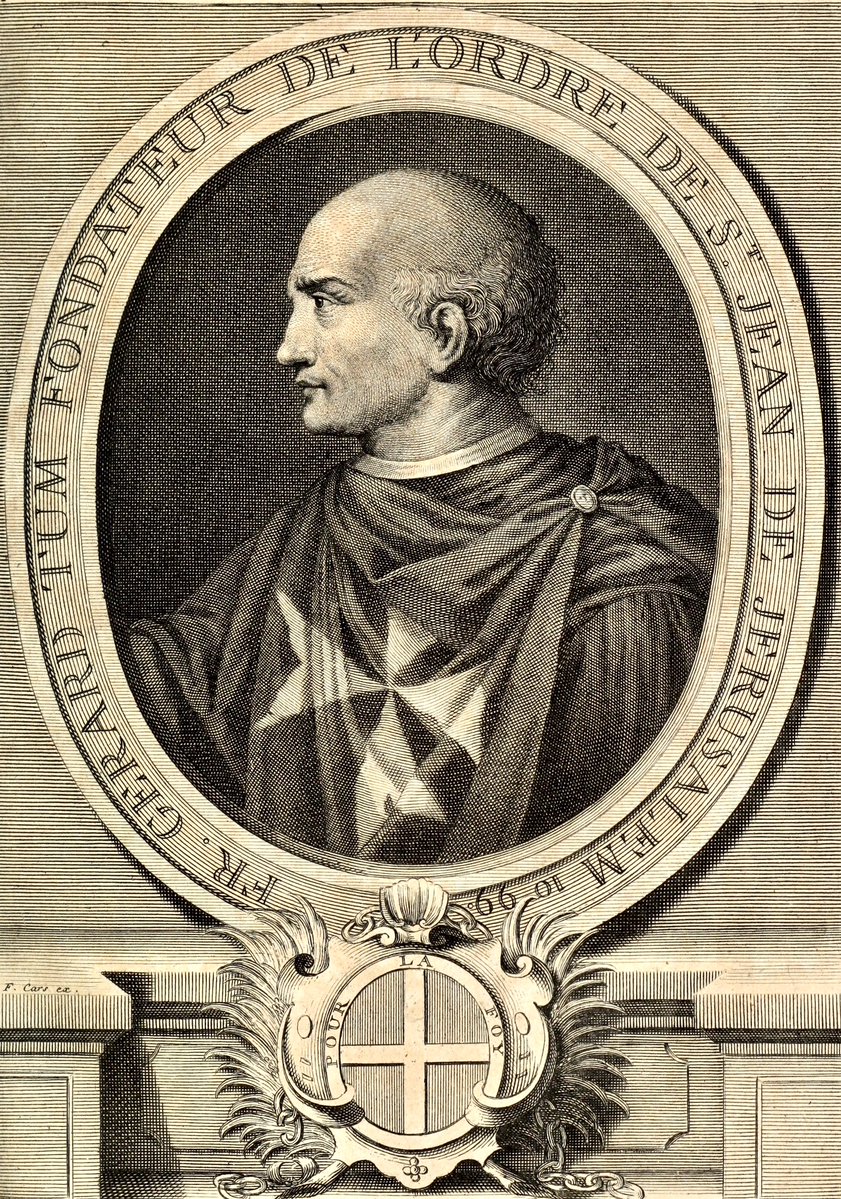 The 3rd September 2020 marked the 900-year anniversary of the death of Fra Gerard (later Blessed Gerard), founder and first Grand Master of the Sovereign Order of Saint John of Jerusalem (the Order of Knights of Malta). Historians claim that he was born in Scala (Campania, Italy) around 1040, and moved to Jerusalem. In 1048, considered the year of birth of the Order of St. John of Jerusalem, merchants from the ancient Marine Republic of Amalfi (or Duchy of Amalfi) that had long-lasting trade relations with Jerusalem, obtained the authorization from the Caliph of Egypt (heir of the city) to build a church, convent and hospital in Jerusalem to care for pilgrims of any religion or race. All these institutions were decorated with the coat of arms of Amalfi: the 8-pointed white cross on blue fond. This white cross became the most important symbol of the Order of St. John of Jerusalem.
The 3rd September 2020 marked the 900-year anniversary of the death of Fra Gerard (later Blessed Gerard), founder and first Grand Master of the Sovereign Order of Saint John of Jerusalem (the Order of Knights of Malta). Historians claim that he was born in Scala (Campania, Italy) around 1040, and moved to Jerusalem. In 1048, considered the year of birth of the Order of St. John of Jerusalem, merchants from the ancient Marine Republic of Amalfi (or Duchy of Amalfi) that had long-lasting trade relations with Jerusalem, obtained the authorization from the Caliph of Egypt (heir of the city) to build a church, convent and hospital in Jerusalem to care for pilgrims of any religion or race. All these institutions were decorated with the coat of arms of Amalfi: the 8-pointed white cross on blue fond. This white cross became the most important symbol of the Order of St. John of Jerusalem. The Order of St. John of Jerusalem, the monastic community established by Fra Gerard that ran the hospital, became independent under the guidance of its founder, Blessed Gerard, who became the head. By virtue of the Papal Bull of Pope Paschal II on the 13th February 1113, Pie postulatio voluntatis, addressed to ‘Gerard, Founder and Warden of the hospice at Jerusalem and to his lawful successors’, solemnly approved that the Hospital became a lay-religious Order and gave the right to elect its superiors without interference from any other authority, secular or religious. Fra Gerard became the very first Grand Master of the Sovereign Order of Saint John of Jerusalem.
During the Siege of Jerusalem in 1099, Fra Gerard was in the city. All inhabitants were forced to assist defending the walls, but Gerard threw small loaves of bread to the hungry besiegers instead of stones. After the three main leaders of the Crusader Army: Robert of Flanders, Godfrey of Bouillon and Robert of Normandy recovered the holy city from Muslim rule, Gerard helped and cured the multitude of the wounded and sick. Many of the crusading knights put aside the sword to join Gerard in this work, and thus the brotherhood expanded rapidly. When the Crusaders besieged Jerusalem, Gerard used his influence to facilitate their victory. Legend even insists that he threw food to them over the walls and that, denounced, he was led before the Muslim governor and was commanded to show what was in the bag he carried; only stones were found in it. But his rapacious adversaries suspected that he had a treasure hidden in his Hospital. He was imprisoned, interrogated and tortured. It was there that the Crusaders freed him from his chains, after they had taken the city’s last defences by storm. Gerard’s toes and fingers had been atrociously burned.
For the services rendered during the siege – free, and deep in the favour of King Godfrey of Bouillon – Gerard returned to the hospital, reorganized it and accommodated all the sick and wounded Christians who had been brought. He cared for them diligently and charitably. Some of his patients, touched by his example, stayed with him as male nurses; others returned to their countries and gave him liberal donations.
Fra Gerard died simply on the 3rd September 1120 in Jerusalem and was buried in his Hospital.
His epitaph reads:
Here lies Gérard, the humblest man among the dwellers in the East;
The servant of the poor, a welcoming friend to strangers;
He was lowly in mien, but within him shone a noble heart. The measure of his goodness may be seen within these walls.
He was provident in many things, painstaking in all he did;
He undertook many tasks of diverse nature;
Stretching out his arms diligently to many lands,
He gathered from everywhere the means to feed his people.
First transference of his remains was to Manosque (France) after 1187. Several sources state that his tomb and relics were destroyed at Manosque during the French Revolution (1789-1799). Just a humerus bone and a vertebra were obviously saved and transferred to Martigues / France.
The sites (countries) of the saved Relics of Blessed Gérard to be find today:
1./ Humerus relic of Blessed Gérard was saved and kept at Martigues Parish Church (Church of St. Magdalen, L'Ile suburb) in France.
2./ Vertebra-Relic of Blessed Gérard at the Eglise Saint Louis d'Anjou (Ferrières suburb) France.
3./ Relics at Saint-Gérard Church in Vitrolles / France.
4./ A part of the humerus from Martigues has been given to the Grand Magistry of the Order of Malta (SMOM) in Rome / Italy and is kept there in the Chapel.
5./ The Grand Magistry has given a part of their humerus fragment to Blessed Gérard’s Church at Mandeni / South Africa on the 3rd September 1996.
6./ The Grand Magistry has given another part of their humerus fragment to the chapel at the Malteser Kommende in Ehreshoven / Germany.
7./ The skull of Blessed Gerard has been at St. Ursula Monastery in Valletta / Malta (from 1830). It was transferred to Malta already in 1749 before the French Revolution, by the order of Grandmaster Emmanuel Pinto de Fonseca, 68th Grand Master between 1741-1773 (from Portugal). During the Order’s stay in Malta the skull was jealously kept in the Grand Master’s Palace in Valletta.
8./ A skull fragment of Blessed Gérard is kept at the Grand Priory of England of the Order of Malta at London / U.K.
9./ Another skull fragment of Blessed Gérard is kept in Sicily / Italy.
10./ A relic of Blessed Gérard at St. Dominic’s Church in Pisa / Italy.
In Blessed Gérard, we find the typical example of those active mystics who are not men with great projects and plans laid far in advance, but who can meet the challenges of the moment and at times foresee them. An event with consequences such as a crusade does not disturb Gerard. He adjusts himself to it as best he can and at his own risk, according to his conscience; then he returns to his work, moulding it to the new necessities.
Today, members of the Sovereign Order of Saint John of Jerusalem, Knights of Malta, Federation of the Autonomous Priories (KMFAP) throughout the world are proud of their history and traditions, and participate actively in the humanitarian activities of the Order to alleviate human suffering, especially amid this unprecedented coronavirus pandemic in 2020. From Blessed Gerard, we can learn the profound spirituality of servitude to the poor, the sick and the needy. Following the example of Blessed Gerard, to respect each other, to live in harmony, so that our lives may be full of joy and peace.
The Sovereign Order of Saint John of Jerusalem, Knights of Malta (KMFAP) continues to exist and to make a difference.
28th October 2020















